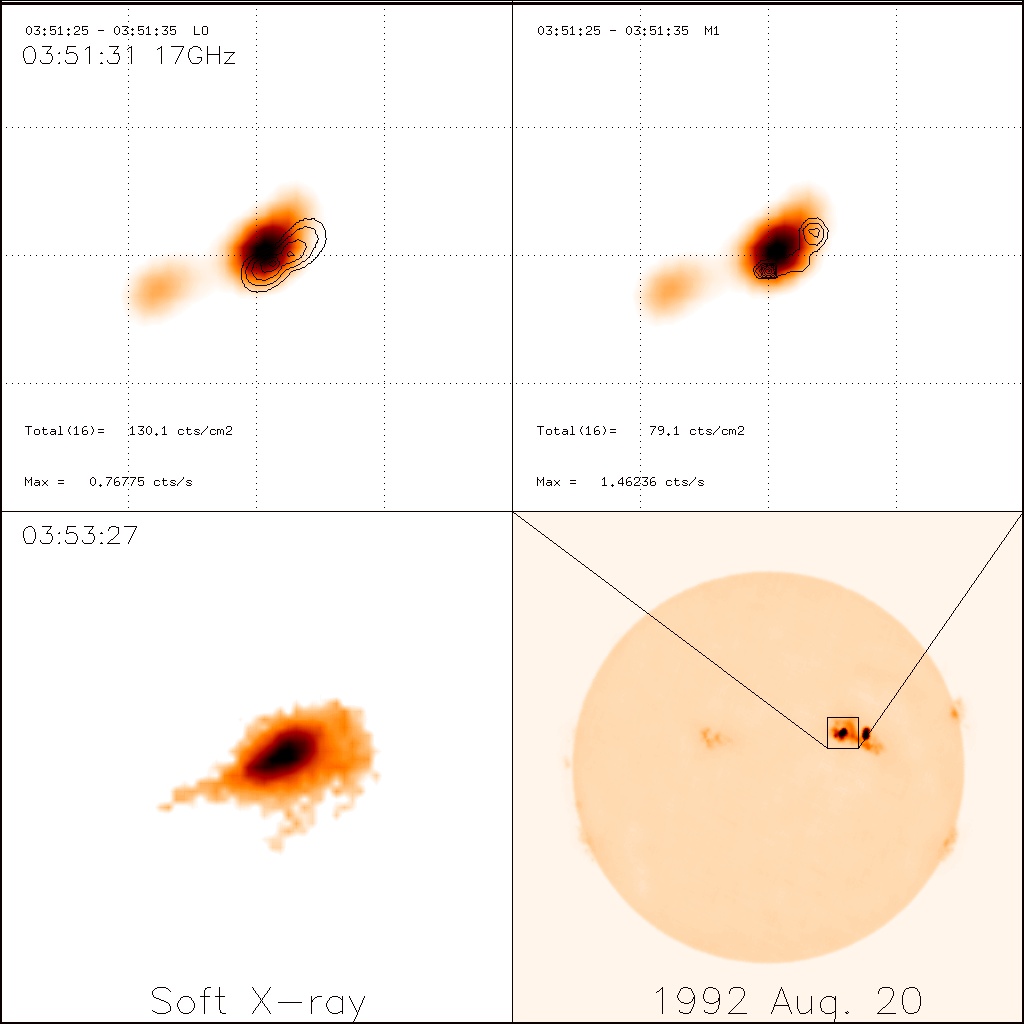
(Nishio et al., Astrophys. J., 489, 976 - 991, 1997.)
The results of an analysis of fourteen solar impulsive flares, observed simultaneously with microwave and X-ray imaging instruments, are presented. From the relative locations of microwave, hard X-ray, and soft X-ray sources, we have found that, for ten of the fourteen cases, at least two loops are involved. Typical sizes of the two loops are different from each other; one is typically < 20" and the other 30" - 80". Microwave emission is detected from both loops, while hard X-ray emission is preferentially radiated from the shorter of the two loops. The shorter loop is brighter than the longer loop in soft X-rays. The intensity variations of microwaves from the two loops resemble each other. These observations, together with comparisons of the microwave/X-ray images with photospheric magnetograms, suggest that in the majority of impulsive flare events two loops interact with each other, releasing magnetic energy and producing energetic electrons. The observations are therefore consistent with the emerging flux model of flares ( e.g., Heyvaerts et al., 1977).
Observation of the 20 August 1992 flare

Hard X-ray images (contours) are overlaid on a radio map. Two hard X-ray sources and a remote radio source are seen in the upper panels. A soft X-ray image is also shown in the lower-left panel.
Observations of the 10 April 1993 flare
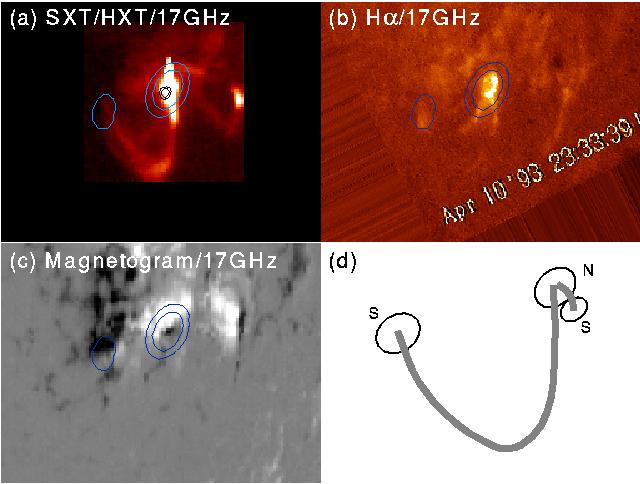
Flare on 1993 April 10 caused by interacting loops. Panel (a) shows a soft X-ray image taken with the Yohkoh SXT, with black contours of a hard X-ray image taken with the Yohkoh HXT and blue contours of a 17 GHz image taken with the Nobeyama Radioheliograph. Two radio sources are connected by a large coronal loop, and an H-alpha image taken with the Flare Telescope, (b), shows brightenings at the microwave sources. A magnetogram taken by NSO/Kitt Peak, (c), shows contacting positive and negative polarities at one of the microwave source which is bright in X-rays. The structure of the loops, which cause the flare, is shown in (d).
Interpretation for solar flares with three-leg structure
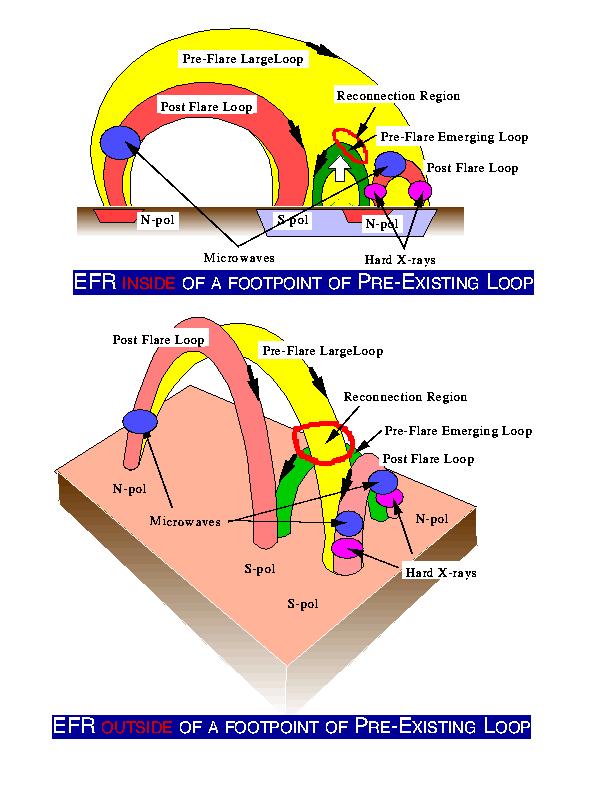
Other flares with three-leg structure
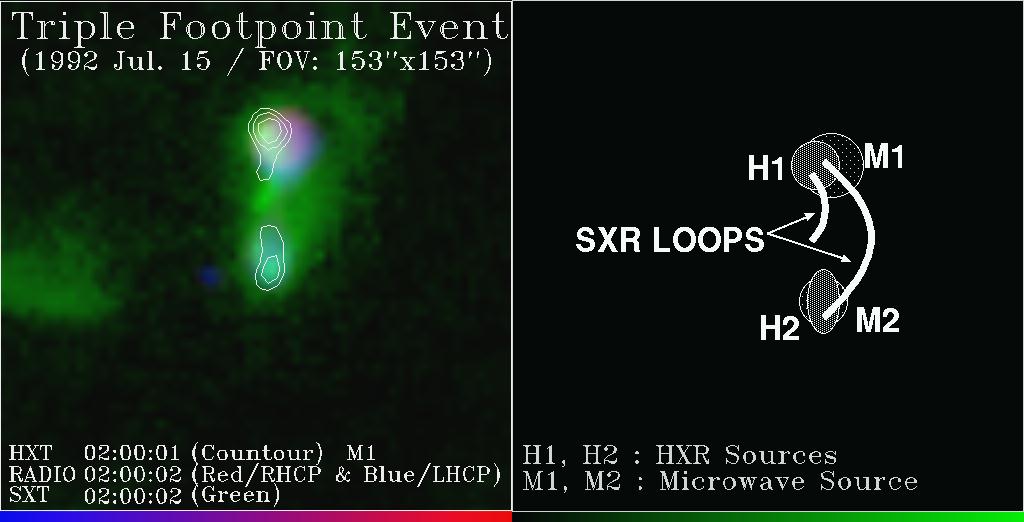 15 July 1992
15 July 1992
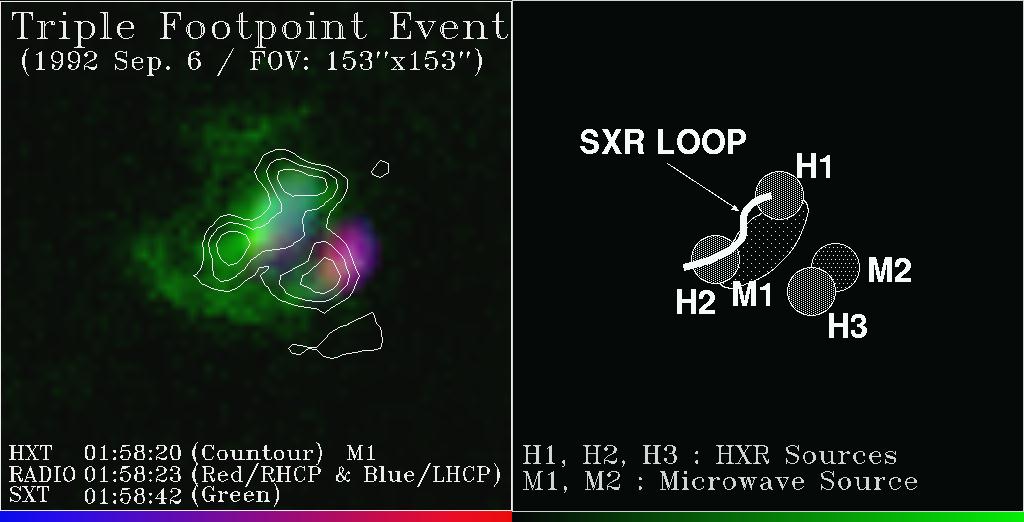 06 September 1992
06 September 1992
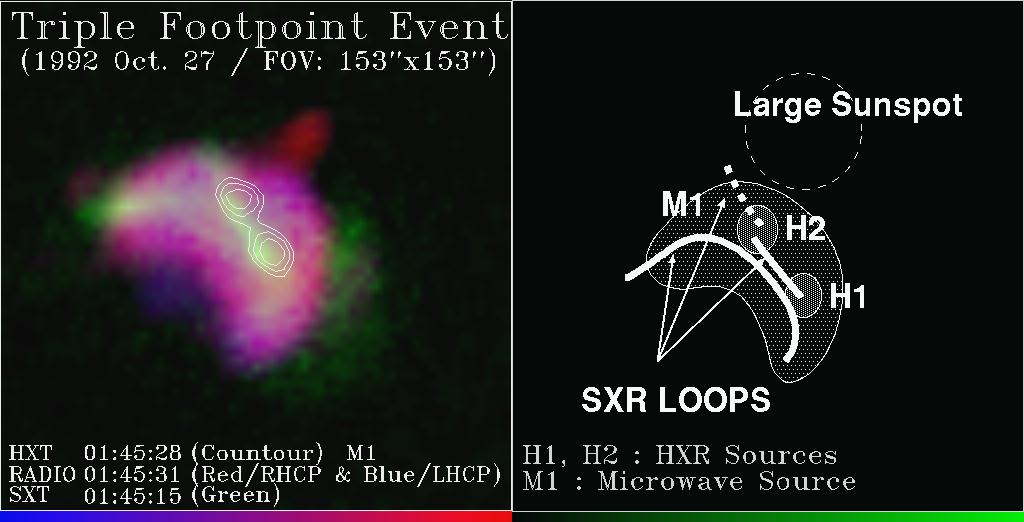 27 October 1992
27 October 1992
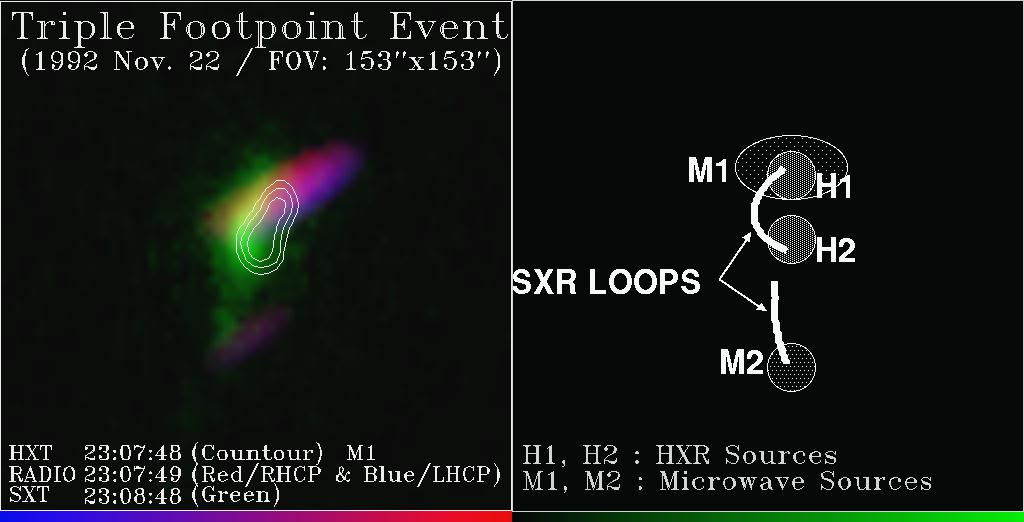 22 November 1992
22 November 1992
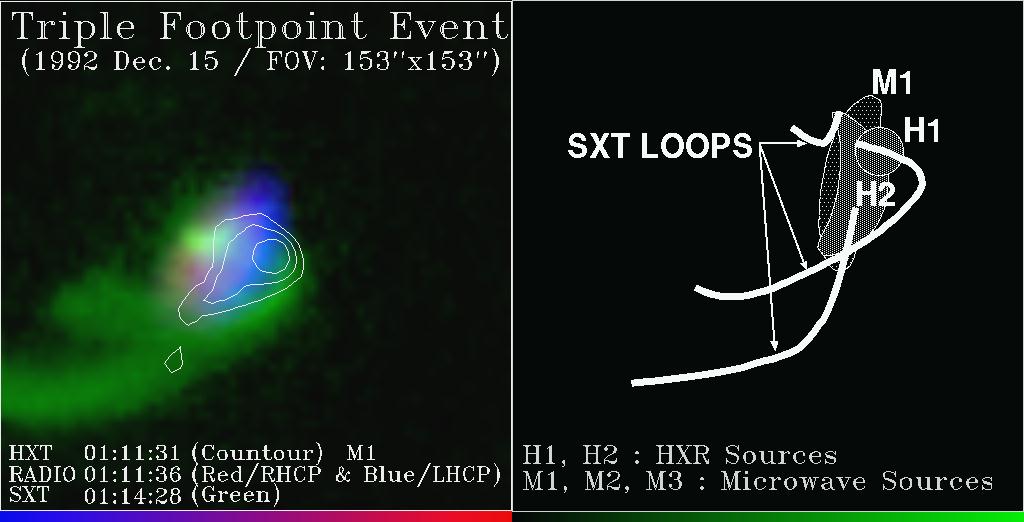 15 December 1992
15 December 1992
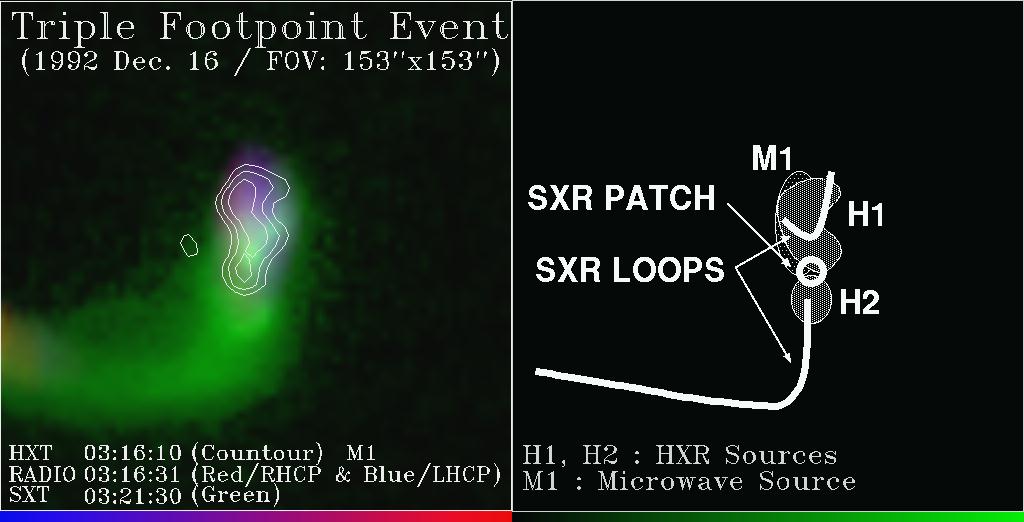 16 December 1992
16 December 1992
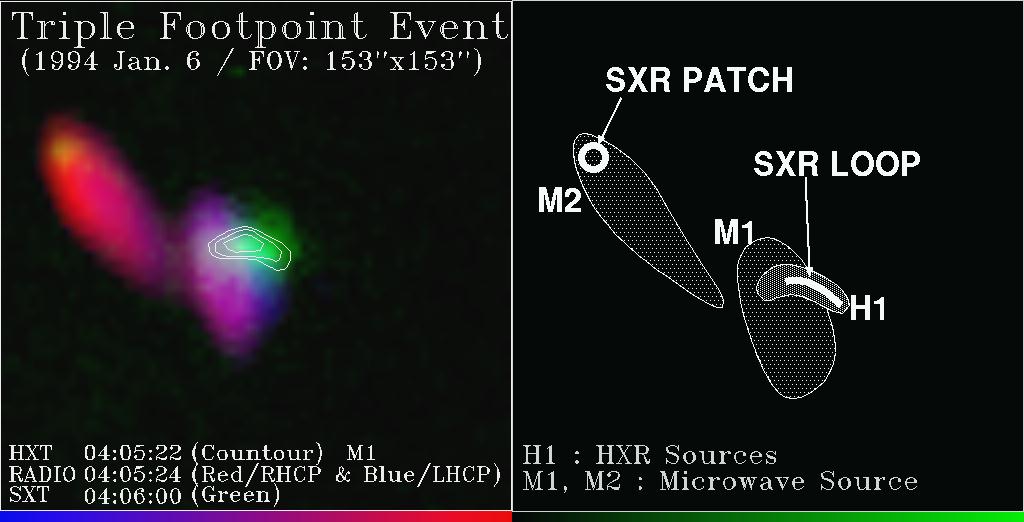 06 January 1994
06 January 1994
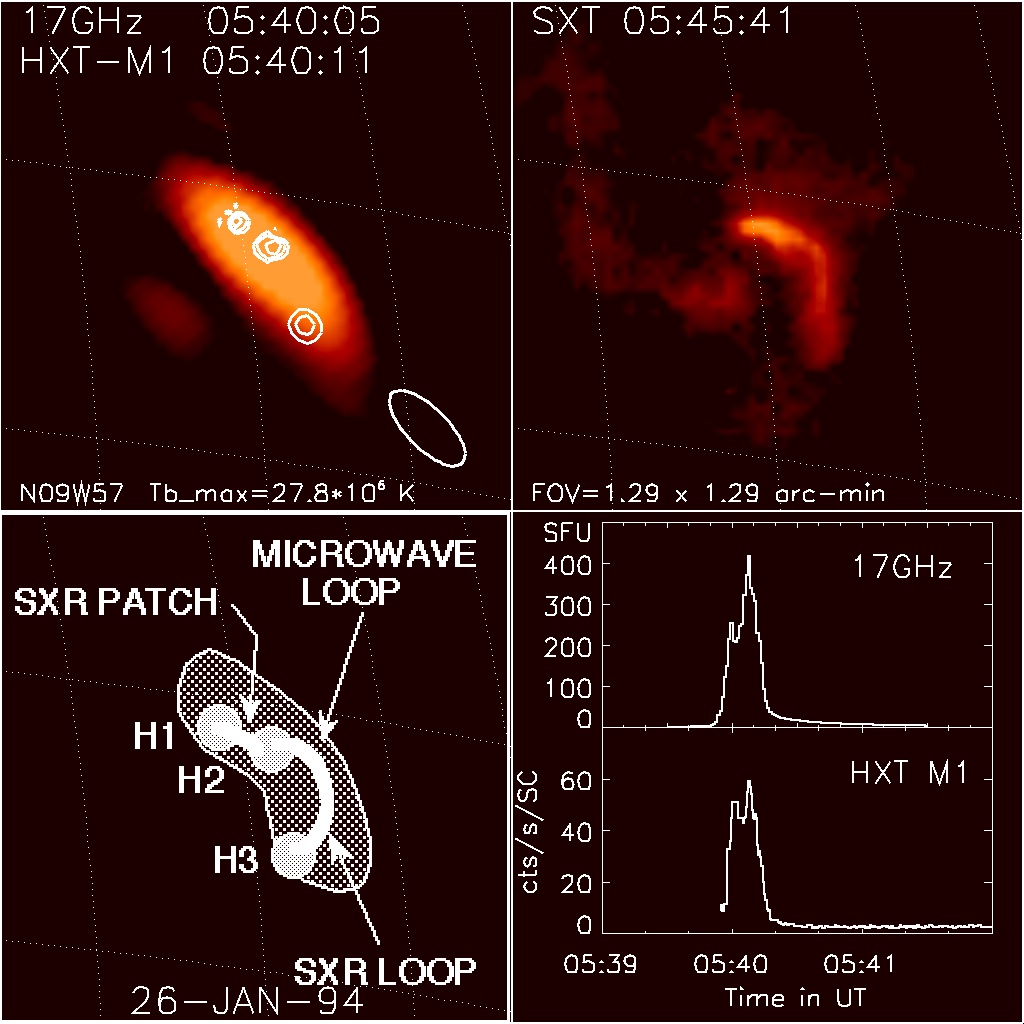 26 January 1994
26 January 1994